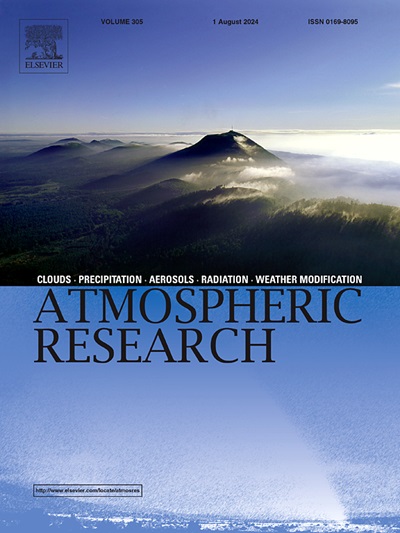Complex network analysis of extreme temperature events in the Contiguous United States
IF 4.5
2区 地球科学
Q1 METEOROLOGY & ATMOSPHERIC SCIENCES
引用次数: 0
Abstract
Extreme temperature events (ETEs), such as recent severe heat waves, are one of the consequences of climate change and global warming. To better understand their complex behavior and forecast corresponding hydrologic dynamics, investigating their spatial and temporal patterns are essential. We, therefore, analyzed ETEs over the Contiguous United States (CONUS) for both summer and winter seasons using complex network theory. For this purpose, the daily maximum and minimum temperature data were collected from the Climate Prediction Center (CPC) database. To determine the level of similarity between two geographic nodes, we employed the event synchronization (ES) method and then constructed the network of ETEs. The constructed networks were next corrected for boundary effects. Network measures i.e., degree centrality (DC), mean geographic distance (MGD), clustering coefficient (CC), betweenness centrality (BC) and long-ranged directedness (LD) were determined to analyze complex patterns within each network. Based on the network measures, we found that the ETEs are more synchronized in winters than those in summers. In addition, the BC and LD revealed that California plays an important role in the large-scale propagation of ETEs during summers, while Texas and the eastern region of New Mexico during winters. Furthermore, the evolution of ETEs from 1979 to 2022 uncovered increasing and decreasing trends for the summer and winter seasons, respectively. We also detected teleconnections near the geographic distance of 3500 km and above over the CONUS. By applying the Louvain method, we detected different communities in the network of ETEs for the summer and winter seasons. We also investigated the effect of time lag, , in the ES method on the complex network results by varying its value from 0 to 10 days. Statistical analyses including the Kolmogorov-Smirnov and paired t-test demonstrated significant differences in the results.
求助全文
约1分钟内获得全文
求助全文
来源期刊

Atmospheric Research
地学-气象与大气科学
CiteScore
9.40
自引率
10.90%
发文量
460
审稿时长
47 days
期刊介绍:
The journal publishes scientific papers (research papers, review articles, letters and notes) dealing with the part of the atmosphere where meteorological events occur. Attention is given to all processes extending from the earth surface to the tropopause, but special emphasis continues to be devoted to the physics of clouds, mesoscale meteorology and air pollution, i.e. atmospheric aerosols; microphysical processes; cloud dynamics and thermodynamics; numerical simulation, climatology, climate change and weather modification.
 求助内容:
求助内容: 应助结果提醒方式:
应助结果提醒方式:


